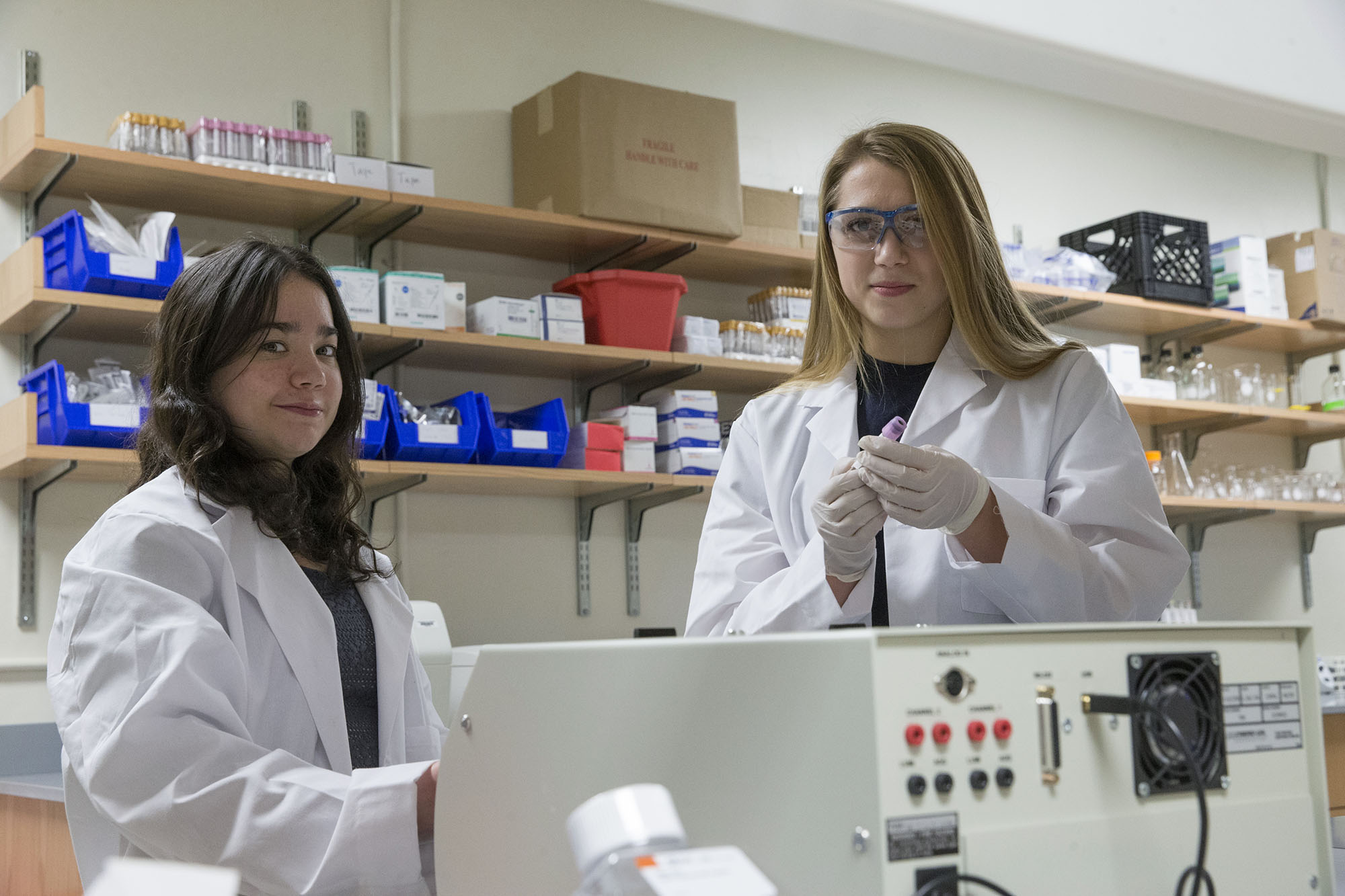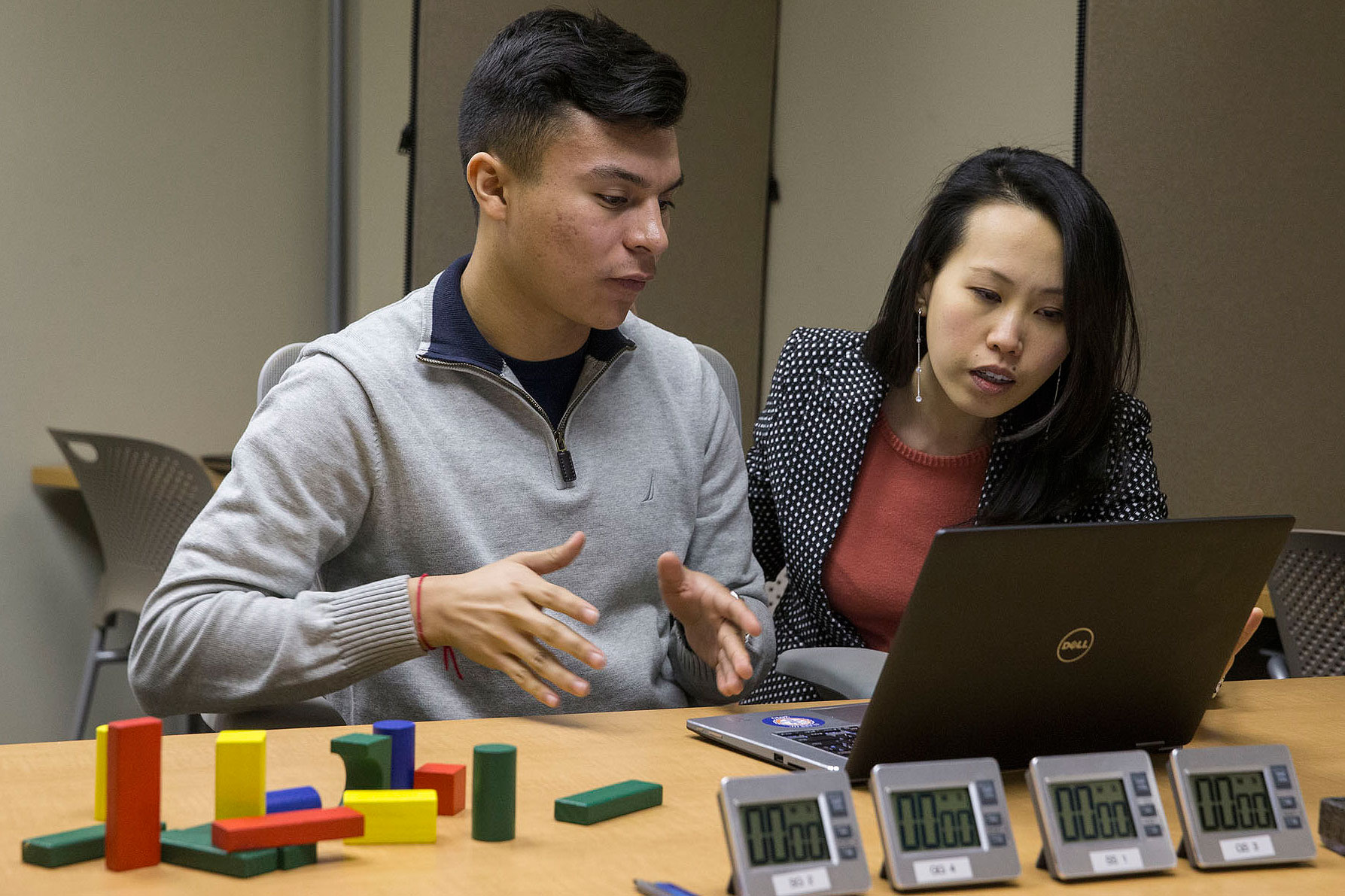This story was originally published Jan. 28, 2016.
University of Virginia students have always been resourceful when it comes to balancing their academic careers with hours spent doing paid work around Charlottesville. Now, a growing program based out of UVA’s Center for Undergraduate Excellence is helping combine those two pursuits.
USOAR, or Undergraduate Student Opportunities in Academic Research, allows first-year, second-year and transfer students to apply for paid research assistant positions with numerous faculty around Grounds.
“The idea for USOAR first came from UVA President Teresa A. Sullivan,” said Brian Cullaty, director of undergraduate research opportunities at the Center for Undergraduate Excellence and director of the USOAR program. “She was familiar with a similar program while she was the provost at the University of Michigan and she wanted to create something like that here,” he said.
The program launched in the 2013-14 school year with just 13 students. With the help of supporting grants from the UVA Parents Fund and the Jefferson Trust, USOAR has grown rapidly in popularity among students and faculty alike; this year, nearly 200 students applied and 61 were selected to work with 49 different faculty members.
“The students pick which positions they’re interested in and then we send the applications to the faculty,” Cullaty said. “They interview and choose the student or students who are going to work with them.”
Although the majority of the positions are intended for students who are eligible for the Federal Work-Study Program, there are also openings available for non-work-study students.
“My secret agenda is to train all of my USOAR students so they will become graduate students or at least get a taste of what graduate school is like.” -- Elieen Chou, assistant professor in the Batten School
“One of the reasons we want to focus on work-study students, especially those who are very interested in learning about research, is because it’s often harder for those students to get volunteer experience,” Cullaty said. “Their financial need usually requires them to devote almost any free hours they could volunteer to paid work instead.”
USOAR offers students opportunities that span nearly all academic disciplines. This year’s roster of positions includes research opportunities in African-American history, ethics and religious thought, social psychology, neuroscience and sports medicine, just to name a few.
As part of the program, students are expected to spend five to 10 hours per week working with their faculty supervisors and are required to complete a one-credit course each semester that introduces them to the principles of academic research.
“What really attracted me to the USOAR program was that it’s intended for people who have no experience in research. That was perfect for me,” first-year College of Arts & Sciences student Hector Quijano said. “This is a way for me to start getting the hang of how it works.”
Quijano is working with Eileen Chou, an assistant professor of public policy in the Frank Batten School of Leadership and Public Policy. Together, they are researching leadership and organizational behavior.
This is Chou’s third time participating in the program and she sees it as a long-term academic investment for students. “My secret agenda is to train all of my USOAR students so they will become graduate students or at least get a taste of what graduate school is like,” Chou said. “Graduate school requires a lot of entrepreneurship and a lot of initiative, and that’s what I expect from all of my undergraduate students.”
Chou’s USOAR approach is slightly different, in that she also requires her students to develop their own research questions. In addition to helping administer different projects in Chou’s lab, Quijano is also creating his own survey and method for researching the way people’s sense of individuality affects their consumer habits.
“I still remember the trepidation in Hector’s eyes when I said, ‘No, you’re going to be doing your own research,’” Chou said. “But now he’s creating his own survey and he’s very comfortable with research terminology.”
Building confidence and familiarity in a research setting is one of the key goals of USOAR. For many students, it’s the first time they’ve conducted formal research or worked closely with a faculty member.
“I think across the continuum of education, many people start the same way – no research experience, not really sure what research is about, wondering what the lab setup is, or even just how to actually analyze that thing in the blood tube,” said Steven Malin, an assistant professor of kinesiology in the Curry School of Education.
Malin, who has a joint appointment in the School of Medicine and serves as director of the Applied Metabolism and Physiology Lab, said that gaining research experience early on was a crucial step in his own undergraduate experience. After joining UVA’s faculty in 2014, he was eager to bring USOAR students into the lab.
First-year College students Jess Looby and Lily Berger applied to Malin’s lab last summer in the hope of getting more hands-on experience as they both consider pre-med academic paths.
“It keeps me excited about what my career could be like down the road,” Berger said. “It’s also opened my mind to lots of different specialties and just research in general because I had no experience before this.”

First-year College students Jess Looby, left, and Lily Berger have the rare opportunity to work directly with patients in a clinical lab run by Steven Malin, a kinesiologist with appointments in the Curry School of Education and the School of Medicine.
“We have two research lines, and it all centers around this idea that exercise is a drug. Our mission as a lab is to understand what’s really the pathophysiology of disease and how can we utilize exercise to target the problems in disease,” Malin said.
The two main focuses of his work are researching the prevention of type 2 diabetes and in developing a metabolic fitness program for bariatric surgery patients. Looby and Berger have worked on both lines of research, tracking and studying patients’ vitals as they test new personalized exercise programs.
“I’m definitely really grateful for the experience and the opportunity to see what research is like and how a lab operates,” Looby said. “I also really enjoy interacting with the patients and getting to know them. I think those are some good skills to develop.”
Although their position through USOAR only lasts one year, Malin gives his students the opportunity to continue researching in the lab throughout their undergraduate career. This is common practice among faculty participants, and something that USOAR actively encourages.
“That’s really one of our goals with this program and one of the reasons we have it open only to first-year, second-year and transfer students,” Cullaty said. “We want this to be the introductory program into research where the students get experience and can go on to do something great in the future.”
Media Contact
Article Information
February 15, 2016
/content/usoar-program-uses-work-study-introduce-undergrads-research

